

‘We’ve


Arts & Culture




‘We’ve



of Biology sounds alarm over budget cuts, warns of impending crisis in education and research
M eghrig M ilkon Senior News Editor
The Department of Biology warns recent budget cuts could undermine the department’s ability to continue delivering a quality education and research opportunities.
A Sept. 12 open letter addressed to senior representatives of all levels of the University administration and all Faculty of Arts and Sciences (FAS) Undergraduate Chairs, with request to forward to their respective department heads outlined the consequences of budget cuts, including a 20 per cent reduction in teaching staff due to voluntary retirements, the loss of critical support staff, and a sharp decline in research capacity.
The letter, sent to all biology faculty and students, expressed concerns, explaining further reductions would lead to larger class sizes, fewer specialized upper-year courses, and diminished opportunities for independent learning.
Signed by 25 members, including faculty professors, department heads, technicians, and lab instructors, the letter showed strong support for the Department of Biology in their fight against the proposed cuts.
“We write from the Department of Biology to provide an on-the-ground perspective on the impact of the current and proposed budget cuts and the likely risks to our future ability to serve our students,” the letter read. “We’ve reached a crisis point,” the letter stated, noting the direct effects on students’ ability to engage in smaller, intensive courses

essential for critical thinking and research development.
of lab instructors required to support current courses

letter, six senior faculty members have opted for Voluntary Retirement Plan (VRP), leading to an anticipated 20 per cent reduction in active teaching staff by June 2025. This decline is alarming according to the letter. Given the faculty Full-Time Equivalent (FTE) was already reduced from 31.5 in 2017 to a projected 21.5 members by 2025.
this reduction will severely limit their ability to teach core biology courses and manage an increasing number of upper-year courses, jeopardizing the academic experience of undergraduate and graduate students.
concern about our capacity to provide teaching in several of our program’s core
biology courses, as well as a decrease in our total course offerings,” the open letter stated. “We have no obvious faculty who can fill those teaching gaps in core courses.”
challenges in maintaining its commitment to research and student training. The letter stated the loss of two research and building support staff has further exacerbated the situation. This reduction has led to the reallocation of critical duties and the loss of a technician responsible for essential research and teaching equipment
teaching team, making timely hiring essential to uphold research excellence.
“The reduction in active teaching staff will significantly weaken our capacity to provide foundational undergraduate learning experiences,” the letter says. “The brutal reality is that implementing the first wave of budget cuts will undoubtedly mean a ‘dumbing down’ of some features of the program.”
The letter details changes in the curriculum that will impact students’ learning experiences. As part of a broader FAS modularization initiative, the Department of Biology is reorganizing its major and specializations, which is expected to result in fewer small-sized courses available to students in the third- and fourth-year courses.
Beyond the immediate impact on teaching and curriculum, faculty members expressed concern about the decline in morale among staff and faculty. They fear that increasing workloads and job insecurity may prompt junior faculty and administrative support staff to seek opportunities elsewhere. The letter raises the alarm about the potential for additional budget cuts to worsen these issues.



The faculty anticipates an additional five senior faculty members may retire within the next five years. Given the department’s need to maintain a critical mass of at least 24 FTE faculty for research and teaching, this potential loss raises concerns. The letter states it typically takes three years to develop early career researchers into fully contributing members of the

The faculty’s call to action isn’t limited to their department; they urge other affected faculties and departments to unite in voicing their concerns and resisting further cuts. They emphasize the need for transparency from senior administration and effective communication across departments, arguing that a uniform percentage cut to all departments is unreasonable given the varying circumstances of each.
“We simply cannot stand any more than already implemented first-wave cuts. Other similarly concerned departments and schools, please speak out. Administrators, please listen.”

IHMC National Board Members sit down with ‘The Journal’
Meghrig Milkon Senior News Editor
Kingston lit up City Hall in green on Oct. 1, marking the 18th annual Islamic History Month Canada (IHMC).
Since 2007, Parliament has designated October as IHMC, dedicated to reflection, celebration, and learning about Muslim communities throughout Canada. Green is symbolic of IHMC and has been long associated with Islam, symbolizing the soothing greenery of paradise.
“IHMC in October aims to celebrate, inform, educate, and share with fellow Canadians the rich Muslim heritage and contributions to society: Contributions in sciences, humanities, medicine, astronomy, and other disciplines that have greatly benefited human
progress. IHMC believes that through education and sharing positive stories, all Canadians can grow and connect in the best way possible,” the official IHMC website says National Board Member of IHMC and participant since its inception, Mohamed Bayoumi, a professor emeritus of electrical engineering at Queen’s, and a founding member of the Islamic Society of Kingston (ISK), sat down with The Journal to reflect on the IHMC’s ongoing dual objectives. The first being of education and building bridges between different communities and groups to create a harmonious society.
“One of the objectives of Muslims is to try not to live in a cocoon but to try and interact with the community at large.
[By] having a program that would help build bridges, I think in this way, people can live
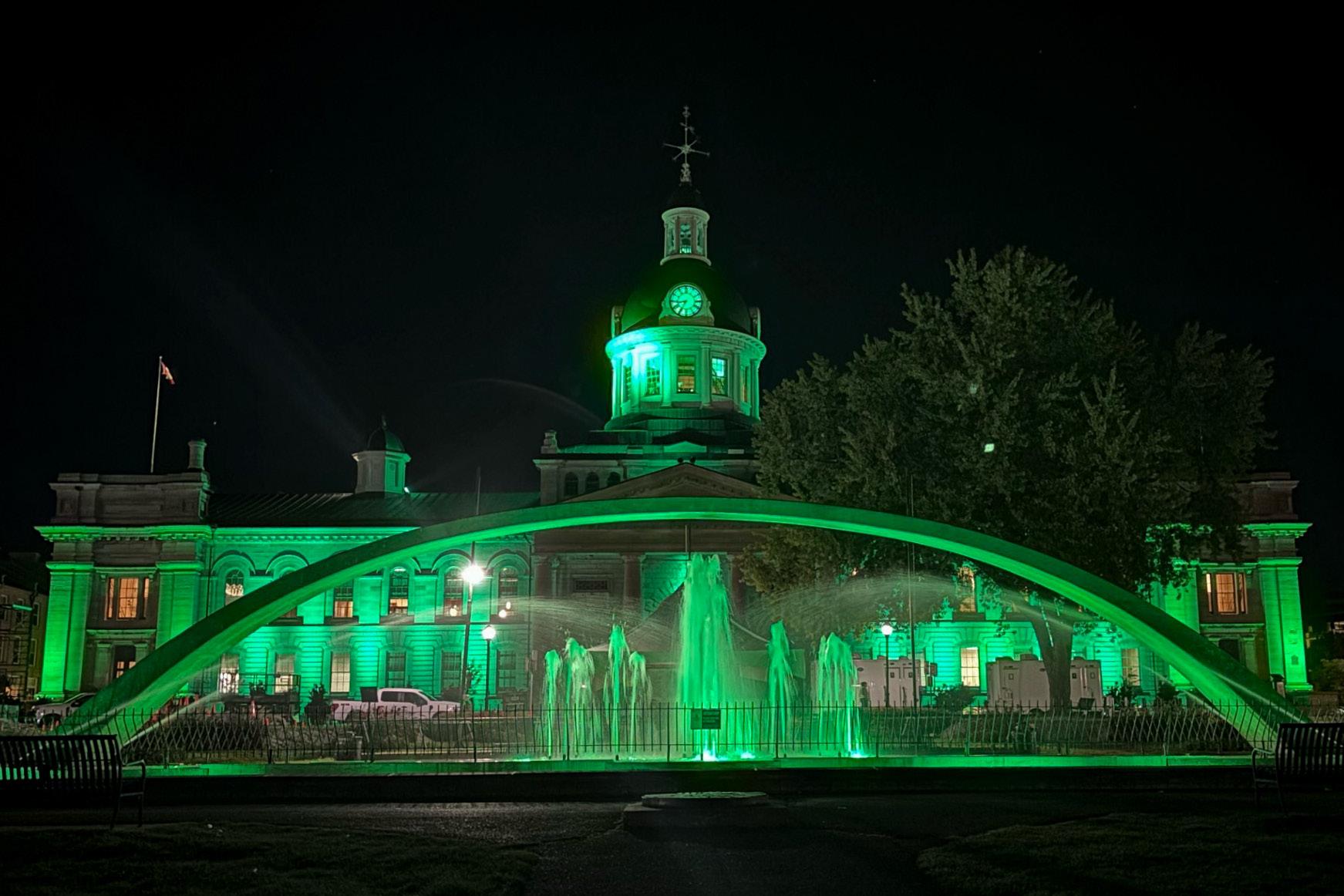
peacefully amongst one another,” Bayoumi said in an interview with The Journal.
Mona Rahman, research awards officer at Queen’s and national board member of IHMC, said “this month
revealed almost half a million dollars of damage in residences
First-year students are among the most vulnerable students with over 50 per cent of sexual violence cases reported
Lauren Nicol Assistant News Editor
Queen’s saw over 1,000 misconduct cases last year, with first-year students driving the majority of sexual violence reports.
The University Culture Committee presented the Sexual Violence Report alongside the Non-Academic Misconduct Annual Report in a report to the Board of Trustees on Sept. 27. The reports revealed over 1,000 instances of non-academic misconduct between May 2023 and August 2024, with 95 per cent of incidents occurring in residences, resulting in more than $400,000 in damages and over 50 per cent of cases of sexual violence involving first-year students from May 2023 to April 2024.
The University’s new policy on Sexual Misconduct and Sexual Violence Involving Students, effective Jan. 2 this past year recognizes sexual violence and misconduct as serious issues that can affect individuals of all genders and sexual orientation regardless of whether the student was in a relationship or
not. Non-academic misconduct involves a departure from the core values of Queen’s, a violation of the student code of conduct, or the residence contract students sign. This doesn’t include academic integrity which involves cheating on assignments. These cases fall under the category of disruptive misconduct, including behaviours of failing to comply or provide identification, unauthorized gatherings, and violations related to alcohol or cannabis.
Over 50 per cent of cases resulted in corrective actions like no contact directives, loss of privilege, notices of prohibition, and educational sanctions. The report confirmed 35 per cent of harassment incidents were based on gender identity, another 35 per cent were based on sexual orientation, and the last 30 per cent were based on ethnic origin or citizenship. While some cases resulted in corrective action, which was often the punishment for less serious cases, more serious cases had harsher punishments that even included a mandatory withdrawal from the University.
The report highlighted 90 per cent of people were undergraduate students, with half of them being first-year students. There were 10 cases of sexual violence reported last year with two thirds of them being sexual harassment and one third being sexual assault. First-year students were also more likely to be involved in cases of sexual violence, according to the report from the the University
Culture Committee to the Board of Trustees. It was unclear how many incidents occurred in residence.
Male students were responsible for 85 per cent of the violations, despite making up just under 40 per cent of the student population, the report confirmed. Two point five per cent of the total student population was involved in nonacademic misconduct.
Damages in residences decreased by over $150,000 from the previous year, which reported more than half a million dollars in damages and Malicious fire alarm pulls dropped from 105 to 52 incidents from the previous academic year with significant change happening in Victoria Hall, where a security system was installed over the summer, reducing malicious pulls from 42 to 14.
“Strong partnerships with Kingston Police, City by-law, Campus Safety and Emergency Services, and Queen’s Integrated Communications, continue to lead to improved outcomes, related to surrounding campus behaviour during peak times throughout the year,” the University said in the report.
From the many violations identified, alcohol was the most common violation of the residence contract and community standards with noise, guests, failure to cooperate, and parties following. The report noted a decrease in negative behaviours in residences, particularly regarding damages and malicious fire alarms.
serves as a reflection of the longstanding presence of Muslims in Canada.” According to the IHMC website, the first recorded Muslim communities in Canada emerged during the state formation period in the 1860s, and Islam is now considered the second most declared religion after Christianity across Canada.
“I think one of the things that we want to emphasize is that when we’re talking about the history of Islamic history and Muslims in Canada, is that a lot of people think that we are a new population. Part of IHMC is to highlight that Muslims have been here for almost as long and even some possibly longer than Canada,” Rahman said in an interview with The Journal.
The diversity within the human race, Rahman explained, is meant to enrich humanity.
“Unfortunately, humanity tends to focus on differences, but one of the principles we have in the Quran is we are created from a man and woman and created in tribes so we may know each other better,” Rahman said.
Bayoumi remains hopeful amid global conflicts people come to the realization that the only way to resolve issues is by talking to one another.
“Islam is against double standards and is pro-justice,” Bayoumi said. “Talking is always better than fighting one another.”
“I am hoping, indeed, that we won’t continue to fight, that indeed the best way to resolve issues is by talking to one another and indeed talking to those who have been against you, not only talking to your friends but talking to those who have taken your rights,” Bayoumi said.
Each year, IHMC is celebrated with different overarching themes that resonate with the community. Previous themes have highlighted the contributions of Muslim women in the arts and science fields. This year, the focus shifts to health and healing.
“Throughout history, the Muslim world has been home
to remarkable physicians, scientists, and scholars whose pioneering work in medicine laid the foundation for modern healthcare practices,” the IHMC website reads.
The IHMC website highlights influential figures in thought, including Ibn Sina, commonly known in the West as Avicenna, renowned for his seminal work, The Canon of Medicine, and Ibn al-Nafis, whose discovery of pulmonary circulation significantly advanced the understanding of the human cardiovascular system. These scholars exemplify the rich legacy of Islamic contribution to health and healing.
As celebrations and events continue to take place on- and off-campus, students and community members are encouraged by Bayoumi and Rahman to take the time to reflect and make an effort to learn while having conversations which progress toward a more harmonious society.
Got a news tip? Email journal_news@ams.queensu.ca
CORRECTIONS
Glitter thrown at Provost Evans during Senate protest
A previous version of this article incorrectly stated that Matiss was the individual who asked Senate to take a break. In fact, it was Student Senate Caucus Chair Lucas Balog.
New Interim Head of the Department of Public Health Sciences aims to tackle mental health stigma at Queen’s
A previous version of this headline and story incorrectly stated Dr. Stuart’s position at the University.
Incorrect information appeared in the Sep. 27 issue of The Queen’s Journal The Journal regrets the
The preliminary plan outlines the university’s upcoming research focuses
Lauren Nicol & Jonathan Reilly Assistant News Editors
As Queen’s aims to elevate its research profile, community feedback will play a crucial role in shaping its strategic vision.
Before returning to her alma mater and working at Queen’s, Vice-Principal (Research), Nancy Ross, ArtSci ’90, MA ’92, obtained a PhD from McMaster University and spent time working at McGill University and Statistics Canada. In her current role, she’s responsible for ensuring Queen’s produces high-quality research in line with the University’s longer-term goals.
Upcoming research goals for the University are outlined in the Strategic Research Plan
(SRP) 2024 to 2029 draft for community consultation, with six themes of research focus being noted. This plan is still preliminary and pending approval from Senate, Ross told the The Journal in an interview.
Establishing research focus and success metrics
In response to what determined the six research themes, Ross explained the focus is generally on areas where the University already has strong research foundations.
“[The] objective here is to say some areas that we know the University works on and is good at. Our twin objective here is to strengthen the strengths we already have and create an ecosystem that allows for newcomers and discoveries to come in, and create new areas for the University,” Ross said in an interview with The Journal.
Ross said the actual process of picking these themes included consultation from multiple department chairs, the Senate Advisory Research Committee, and the Research Advisory Council.
Ross gave a few examples of how they monitor success in these themes, with the amount of revenue generated in each research area, the number of PhD students graduating, improvements in the University’s global rankings, and the attraction of high-level talent from around the world all being indicators of success they use.
Research themes anchored in excellence
Each theme is anchored by a “story of excellence,” according to Ross, highlighting significant advancements made by Queen’s researchers in their fields. For example, Queen’s Nobel Prize-winning work in astroparticle physics advances our understanding of the Earth and the universe.
The main themes of research Queen’s will be focusing on include understanding the Earth and universe, reducing the burden of disease, promoting health and wellbeing, innovating in humanistic inquiry and cultural expression, delivering materials for the future,
‘I want to die of old age, not climate change,’ seniors chant at Confederation Park
Jonathan Reilly Assistant News Editor
Federal politicians, seniors, and everyday Kingstonians gathered at Confederation Park to speak about climate change issues.
Seniors for Climate Change Now (SCAN), is a social justice group comprised of senior citizens dedicated to advocating for action on climate change and environmental issues. The organization held a rally at Confederation Park on Oct. 1 to raise awareness for their climate justice cause. Their mission is driven by a commitment to “the sake of future generations” and the survival of life on Earth.
Centred around the main theme of climate justice, attendees were welcomed with signs reading, “Don’t be a fossil fool” and “Later is too late.” Speeches from SCAN members and local climate advocates occurred as well as musical performances from local artists such as Abbie Miolée.
Representatives from the Ontario Green Party were present at the rally, including Fintan Hartnett, the Green Party candidate for Kingston and the Islands in the upcoming federal election. In an interview with The Journal, Hartnett outlined his vision for the Green Party’s future in shaping Canada’s
political landscape, emphasizing the party’s commitment to tackling climate change and promoting sustainability.
“What I want to do and what the Greens want to do is rebuild that focus on the future, on a green economy, and on all the things that make Canada a great place,” Hartnett said.
Hartnett believes Queen’s students are key drivers of change and an important part of Canada’s future. He encourages Queen’s students to act, noting social media makes it easier than ever to connect with like-minded individuals, build momentum, and drive change on issues they care about.
For voters who may support the Green Party but shy away from voting for smaller candidates, Harnett encouraged them to “exercise democracy” and have the courage to take that step, emphasizing the collective power of individual votes. He warned of the consequences of voter apathy and inaction leading to negative outcomes.
“If you’re going to be frightened every time you vote, you’re never going to vote for what you want, you’re going to vote for what you’re frightened about.
Demonstrate the courage that all Canadians have had for centuries,” Hartnett said.
Rally attendee Claire La Sage has recently recognized the significance of halting fossil fuel use as they’re a major contributor to the climate crisis, she shared in an interview with The Journal.
“I’m now beginning to realize how important it is to get rid of fossil fuels. It’s a major contributor
advancing the next generation computing and analytics, and building productive, inclusive, and sustainable societies.
For disease and health, Ross explained Queen’s stands out when it comes to cancer research. “We have a really big strength in bladder cancer, you’ll see some interesting results coming out there in the near term,” she said.
On the topic of cultural expression, Ross pointed out the construction taking place at Agnes Etherington Art Centre, which will make it the largest university museum in Canada. Ross highlighted the theme of “delivering materials for the future,” emphasizing innovative advancements in organic chemistry related to coatings that minimize corrosion.
According to the SRP, Queen’s is in the midst of researching AI and digital privacy to protect Canadian data.
The Queen’s Centre for Security and Privacy (QCSP) is researching and training individuals in cybersecurity and data privacy which is helping to advance the
next generation of computing and analytics.
Driving research excellence and collaboration
The University’s supporting research to address global challenges and aims to rank among Canada’s top 10 research universities in the Times Higher Impact Rankings. Queen’s plans to attract, engage, and retain top research talent, Ross said.
Queen’s is hoping to increase collaboration between the University and its academic partners such as the Royal Military College of Canada, St. Lawrence College, and community partners such as local research hospitals to create economic development and cooperation in Kingston.
Continued online at www.queensjournal.ca
to our climate crisis, and it really should be changed,” La Sage said.
In an interview with The Journal, Maha Faruqi, a spokesperson for the Ontario Public Interest Research Group (OPIRG) emphasized their commitment to advocating for “social and environmental justice,” and explainined the importance of participating in the rally. The OPIRG Kingston is a social justice organization advocating for education and action for social and environmental justice, decolonization, 2SLGBTQ+ issues, and more.
“Climate justice is urgent. We need to be thinking about climate justice in relation to all sorts of other issues like the global war machine, capitalism, [and] fossil fuels industries,” Faruqi said.
Another SCAN member, Jamie Swift, spoke to his experiences joining the group, noting that his driving force was the birth of his granddaughter, Nora.
“I can’t know whether Nora will ever have children or grandchildren. Indeed, some are so worried about the planet’s dire future that they’re reconsidering the once-unquestioned idea of even having children,” he wrote in a post on the SCAN website.
SCAN Kingston is one of several SCAN branches, with seven cities across Ontario having their own branches, including Barrie, Guelph, London, and Northumberland, Ottawa, and Toronto.
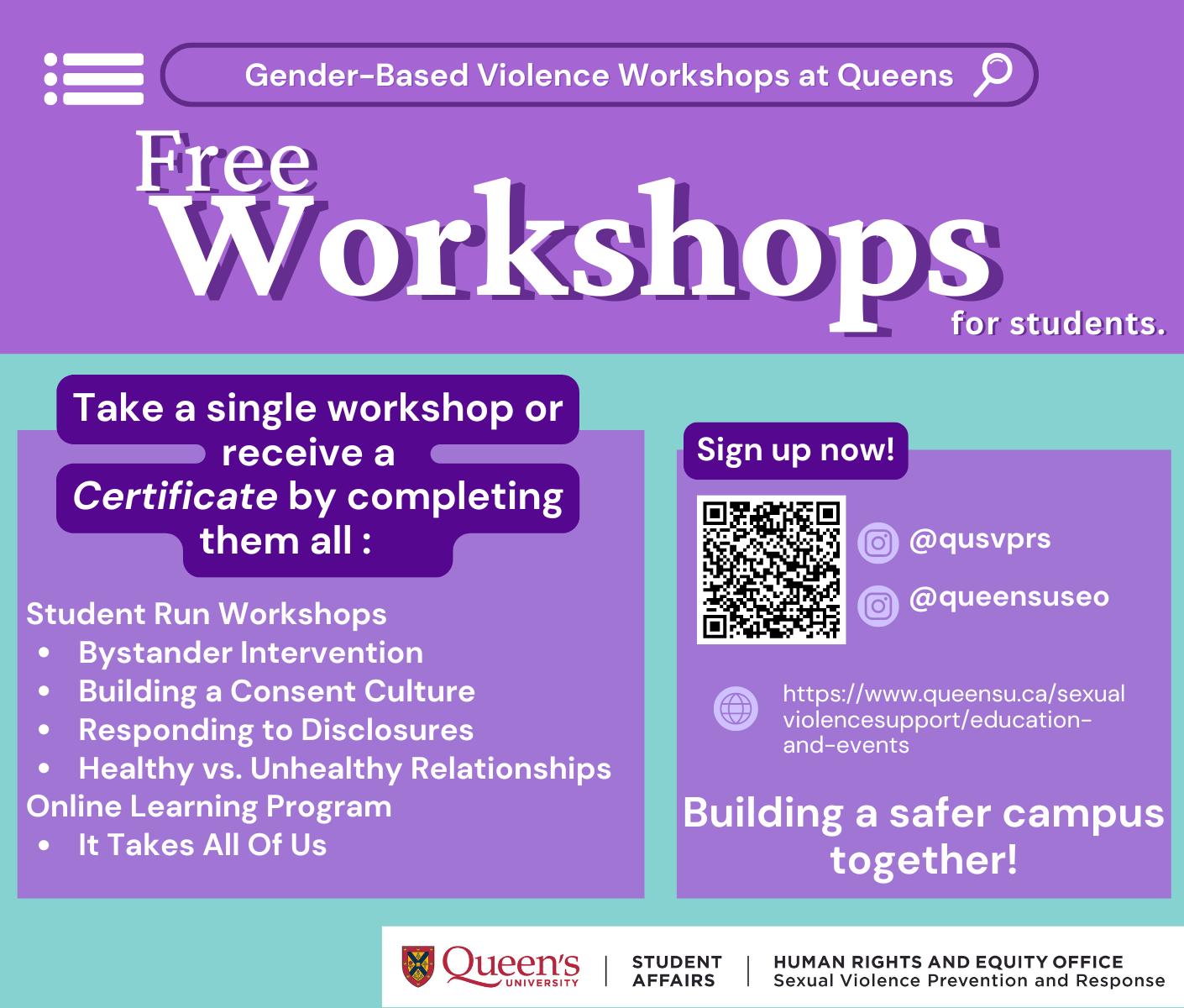

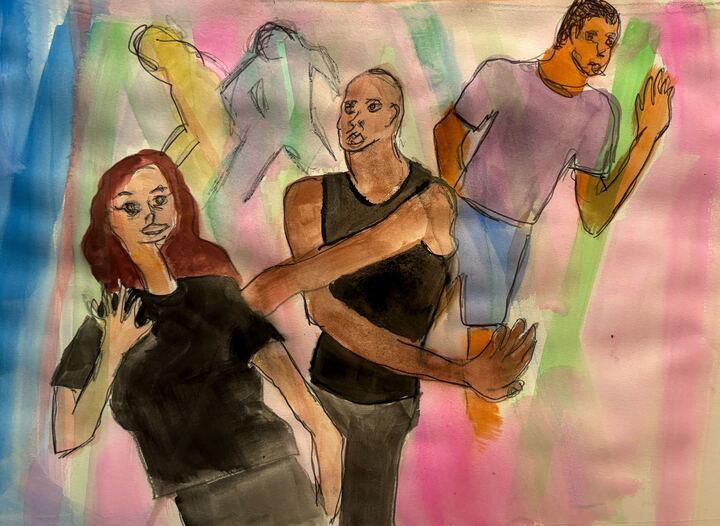
at event venues in Kingston. Budget issues, noise bylaws, and unethical venue owners are among the many obstacles KRC has had to overcome. While Vince hopes that KRC will grow, he’s committed to maintaining the “punk,” anti-capitalist essence of community raves.
“Marginalized people came together to create their own freedom and sound which is what the rave community is,” Vince said. “Why commercialize and capitalize on that and ruin the DIY beauty in it?”
Aaniqa Karmali Features Editor
Like many queer teenagers from a small Ontario town, Vince, the founder of Kingston Raves Community, always dreamt of leaving Kingston to experience the rave scenes in Toronto and Montreal.
After attending his first rave as an 18-year-old in Toronto, Vince knew Kingston needed its own rave community to serve as a safe haven for 2SLGBTQIA+ youth. Up until the 90s, Kingston had a rich underground rave scene pioneered by its local queer community. In the 2000s and early 2010s, the underground scene was replaced by the adoption of Electronic Dance Music (EDM) by club culture, with clubs like Stages featuring Skrillex, Avicii, and Steve Aoki. Today, however, this vibrant history is just that—a memory of what the rave scene used to be.
Through the Kingston Raves Community (KRC), Vince is committed to changing this reality. Known as rareasfck in the DJ sphere, 21-year-old Vince was born and raised in Kingston. Growing up, Vince never had the opportunity to attend raves. It was only when he moved to Toronto after graduating high school that he gained access to the scene.
“I originally got into the rave scene for the music, and to party of course,” Vince said in a statement to The Journal. “Although [I was] excited to have access, I realized the Church St. scene has pushed young queer people away with its prices and music.”
Vince sought out an alternative environment where he could truly “fit in” and be himself.
“After experiencing D.Dan, UFO95, AADJA and Measure Divide, and the warehouse techno environment, I finally felt I found my community,” Vince said. “But I still knew there had to be cheaper, more consistently
attendable events.”
Eventually, Vince found the underground rave scene which provides accessible and often free spaces for queer individuals. In 2023, Vince returned to Kingston from Toronto, hoping to find a local rave scene that had developed while he was gone, but unfortunately, this wasn’t the case.
The absence of a rave scene in Kingston is what motivated Vince to start the KRC, a renegade-style rave collective for anybody interested in helping to revitalize Kingston’s underground rave scene.
“I started the page in hopes of promoting raves with the values and experience I gained from Toronto’s scene, but I quickly realized there are no actual ‘raves’ being organized here that I would want to promote or support,” Vince said. “It very quickly turned into me realizing if I’m not going to do it, nobody else is either.”
KRC organized several secret do-it-yourself (DIY) renegades over the summer and hosted their first open decks event on Sept. 26. KRC’s open decks event provided a space for novice and experienced DJs to perform for an audience and meet others in the community. For many event attendees, the open decks event was one of the first queer-centred spaces they had found in Kingston.
Ren Chalykoff, ArtSci ’27, attended the open decks event and was refreshed to meet a community of other queer ravers like herself.
“I loved attending a rave in Kingston, and I’m extremely happy we have KRC to prepare raves for the Kingston community,” Chalykoff said in a statement to The Journal “The people at the KRC rave I attended were top notch.”
In addition to being a safe space for queer people, Vince hopes to prioritize the needs of all marginalized community members through KRC.
“The intersection between
the rave scene and marginalized communities has very deep roots—cultural, social, and political,” Vince said.
He added raves have always been spaces of resistance, inclusivity, and liberation for marginalized groups, specifically people of colour (POC), 2SLGBTQ+, and working-class youth.
By hosting free renegades for the local community, KRC hopes to provide accessible forms of entertainment for economically marginalized people who can’t afford clubs or other mainstream nightlife options. Historically, this need for accessibility was one of the reasons that raves emerged as an alternative nightlife form.
“DIY and renegade rave culture enables people to create spaces on their own terms, free from commercial exploitation,” Vince said.
Vince explained the financial accessibility aspect of rave culture has diminished as larger, commercialized raves and festivals have overshadowed smaller, DIY raves and renegades. For this reason, he thinks it’s so important to revitalize Kingston’s underground rave scene.
“Community-led raves are vital to maintaining authenticity, inclusivity, and the true spirit of rave culture,” Vince said.
“At the heart of rave culture is respect
“[There’s] a ‘social contract’ within rave communities, where differences are embraced, and everyone is encouraged to connect through mutual respect and compassion,” Vince said.
“It’s about you as an attendee contributing to creating a space where people can feel safe, accepted, and free to express themselves without judgment.”
KRC has faced numerous barriers to planning raves, particularly sanctioned raves
as well as reggae music respectively. Sound system culture and dance culture were also pioneered by racialized communities in North America and the U.K., Kent-Pym added.
“It’s really important to acknowledge [this history] because I feel like there are some folks who have led an erasure of that,” Kent-Pym said. “When [raving] became more mainstream, that’s when you started seeing lineups that were all white or made up of only cishet males.”
Estella Maise Kent-Pym, also known as DJ Lala Gothicfish, is the founder of Estella Originals (EO) and Pure Campy, two alternative event organizations based in Toronto. Through these organizations, Kent-Pym has organized over 30 raves and has played at many others.
EO was Kent-Pym’s first passion project, and strangely enough, it started off as a high school business project. Kent-Pym was already passionate about throwing underground parties, and this project sparked their decision to create an official collective for all-ages, queer-friendly events.
Kent-Pym was inspired by the rave scene with which she was familiar from a very young age, as their mom was a raver in the 90s.
“It was very much a community where I felt safe for the most part, and it was also a community that I wanted to contribute to, to make it feel even safer and more welcoming,” Kent-Pym said in an interview with The Journal.
As a rave baby, Kent-Pym was raised with the concept of PLURR, which stands for peace, love, unity, respect, and responsibility. This term was coined in the 90s by DJ Frankie Bones to create a sense of community in the blossoming rave culture at the time. The values embodied by PLURR have been a staple of the rave world ever since.
To Kent-Pym, embedding PLURR into EO policy is an essential part of keeping the community safe, particularly as an all-ages event organizer.
“Not to toot my own horn, but I’m probably one of the strictest policy organizers in the city, specifically when it comes to predatory behaviour,” Kent-Pym said. “It’s completely zero-tolerance.”
Kent-Pym explained individuals who have crossed others’ boundaries at events, have a history of crossing boundaries in the scene, engage in discriminatory behaviour, or have serial allegations against them aren’t welcome at any of her events. As a teenager in the punk and rave scene, Kent-Pym witnessed this kind of behaviour frequently go unchecked. Now, organizing their own punk shows, goth shows, raves, and other events, safety is Kent-Pym’s top priority.
“It quite literally comes down to the question of, do I want to make an extra twenty dollars from a ticket sale and possibly have people get hurt at my events, or would I rather just not get that twenty dollars and potentially save people from trauma? It’s really as simple as that,” Kent-Pym said.
Kent-Pym recognizes the importance of acknowledging marginalized communities’ historical contributions to the rave scene. Techno and jungle, two of the main genres of rave music today, derive from queer culture
Harm reduction is another critical aspect of being a rave organizer. Kent-Pym believes it’s important to have open conversations about substance use at raves.
“Although there’s a lot of stigma around substance use, no one can deny the fact that whether you talk about it or not, people are going to use, and it really comes down to whether they would feel comfortable coming to you in an emergency or not,” Kent-Pym said.
EO works with harm reduction organizations like Rave Angels to address substance use emergencies among other issues that may arise at events.
Tommy Akinnawonu, a 19-year-old student at Toronto Metropolitan University (TMU), decided to join Rave Angels as a volunteer several months ago. Like other rave angels, he is trained in conflict de-escalation and administering Naloxone, a medicine that can prevent opioid overdoses.
Since joining Toronto’s rave scene, Akinnawonu has observed a substantial shift in overall safety for event attendees. He believes the pandemic sparked increased awareness of harm reduction in the scene, making raves safer for everyone, especially minors.
“When I go as a rave angel, I’m finding that although there are still some issues that arise, they’re all solved very easily,” Akinnawonu said. “I’ve noticed that people are a lot safer on the dance floor.”
Rave angels like Akinnawonu wear glow-in-the-dark armbands so they can be easily identified for help.
“[Having rave angels easily accessible at events] just makes people not feel alone,” Akinnawonu said. “They know where to go if there’s an issue going on, and they know they’ll be kept a lot safer than if they were left by themselves.”
Angel Nayyar, known as Angelphroot in the rave community, is a raver-turned-DJ who entered the scene as a high school student. At the time, she was struggling with mental health issues and searching for a judgment-free environment for self-expression.
“[The rave scene] helped me get through high school, when I had depression, anxiety, and was struggling a lot,” Nayyar said in a statement to The Journal. “Having something to look forward to every month where you’d go and see people who were weirdos like you was really comforting.”
As a queer, disabled woman of colour attending a predominantly white high school, Nayyar found a safe space in the rave world.
Continued online at www.queensjournal.ca
There are many avenues to advocacy, but few make a statement quite like a bottle of pink glitter.
Last week, on Sept. 26, Queen’s held its first Senate meeting of the academic year in Robert Sutherland Hall. Discussion was in full swing until it was abruptly disrupted by six protesters, who came to confront Senate with issues surrounding graduate student funding.
The protestors voiced valid and pressing concerns about student financial equity, ethics, and human rights. But when their blatant message alone would’ve left Senate with enough to ponder on, it was their final actions that left a lasting, perhaps unfavourable, impression.
Following their speech, the protestors chanted for Principal Patrick Deane and Provost and Vice-Principal (Academic) Matthew Evans to resign from their positions.
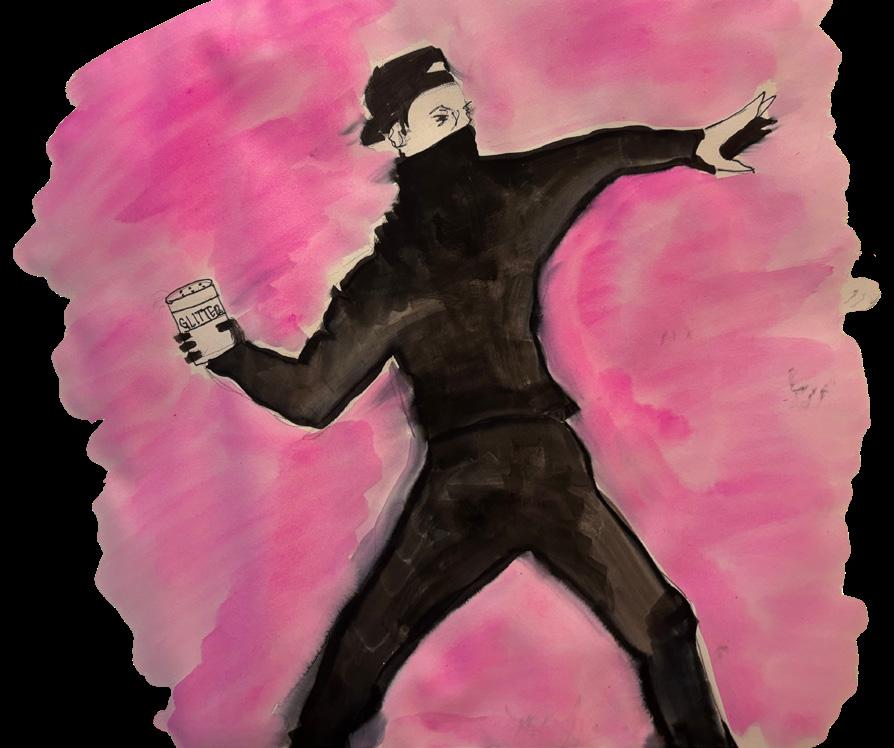
Their demands for Queen’s to divest from arms manufacturers, cut ties with Tel Aviv University, and “address their colonial white supremacist past” all suggest there’s no place for violence, discrimination, nor complicity to them in this institution. If anything, these principles apply to advocacy, too.
Combatting one form of violence with another, regardless of how mild it may have been, shouldn’t be the path to achieving change. What could’ve been positive step forward for Queen’s University Students VS Cuts (QUSCV), and the human rights advocacy movement is now tainted by a negative light.
Not only does the glitter take away all seriousness from these concerns, but it undermines the
important demands students have been pushing on the administration. The movement, including each step of action should reflect the severity, through and through.
The senior administration’s decision to consider cutting funding for the Queen’s Graduate Award (QGA) will undoubtedly affect a lot of people—to put it bluntly, it’s a breach on education as a student’s right. Navigating large institutions through financial hardships involves inevitable mass budget cuts but eliminating student funding is the wrong course of action to balance out the budget. Taking away funding will drive out prospective students and put underprivileged or marginalized students in an even tougher position.
Conversations between Queen’s and its students wouldn’t just be easier but more civil if administration were transparent with students about where money is being channeled. Without their support and honesty, students are left in the dark and to their own devices.
Because these controversies stem from higher levels, there’s a tendency to paint members of administration as the villains and forgo all decency and respect when addressing them, resulting in protests like this one.
Outside of their jobs, the administration are real people with real feelings who should be treated as such.
There’s also value in being able to speak with people with whom you share different views.
Students may not side with these administrative decisions, but to evoke policy change we need them on our side, not against us.
Following the incident, QUSVC shouted out The Journal in their Instagram post commending its “immediate and fair coverage of the meeting.” While this recognition is appreciated, integrity and neutrality are part of a journalist’s job, not a reflection of who they stand with.
In the end, the protestors’ choice to throw glitter, of all substances, remains unclear. The cloud of pink dust may have had its momentary flair, but its damage is irreversible, and the consequences will remain.
Journal Editorial Board
Natalie viebrock
Postscript editor
Unpaid practicums impose stress and financial burden on Queen’s students.
In May, I completed a 120-hour practicum with the Toronto District School Board (TDSB) as part of the requirements for the Queen’s Concurrent Education program.
The same month, on May 16, the International Federation of Social Workers (IFSW) celebrated a landmark achievement: the successful lobbying for paid placements for social work students in Australia.
The Australian Council of Heads of Social Work Education, which represents 38 universities, highlighted the significance of this move, stating, “social work placements, alongside teaching and nursing, have been recognized as an equity issue in feminized professions where many students, both urban and rural, face significant disadvantage.”
This acknowledgment reveals a broader systemic issue tied to the undervaluation of work in so-called “feminized” professions—fields traditionally dominated by women. It reflects the historical and cultural biases that permeate work associated with caregiving and education: despite their critical role in society, these sectors are underpaid and overlooked.
The lack of compensation for placements in feminized professions only deepens this inequity. At Queen’s University, female-dominated faculties like Nursing and Education list placement hours as a graduation requirement. While these mandatory placements are promoted as invaluable learning
opportunities—which they undoubtedly are—their value comes at the cost of imposing significant stress on students.
In May, as I anxiously awaited news of my placement, I worried about scrambling to book last-minute train tickets and securing accommodation for the month-long stay. Many of my peers faced similar challenges, being placed far from home and forced to endure long commutes, often incurring steep travel and gas costs.
Students are forced to absorb the costs of completing mandatory hours, all while navigating the already high financial burden of post-secondary education. Unpaid placements, particularly those during the summer, add further financial strain, as students must forgo valuable earning opportunities to fulfill unpaid practicum requirements—an obligation that leaves them with little choice or flexibility.
Many Queen’s students like myself have missed out on hundreds of potential working hours to fulfill required practicums, leaving us to question whether the financial and time burdens of the program are truly sustainable.
Over the past three years, I have completed 320 hours of practicum placements in various classroom settings, each with its unique demands and challenges. Despite the considerable time, effort, and personal funds I’ve dedicated to
these placements, none of this work has been compensated. As I approach my fifth and final year of the ConEd program, I hold little hope of being able to balance even a part-time job alongside my studies and practicum requirements.
However, the recent success of the Australian Association of Social Workers provides a glimmer of hope.
Their progress suggests that Canadian public service organizations, like the Ontario College of Teachers, might one day advocate for similar reforms, ensuring students receive the support and compensation they deserve for their vital contributions.
If the Australian model were adopted in Canada, it could lead to better support for future students with required placements, alleviating financial burdens and better-preparing students for post-graduation success in the field they’ve worked hard to be a part of.
Natalie is a fourth-year ConcurrentEducation Student and The Journal’s Postscript Editor.
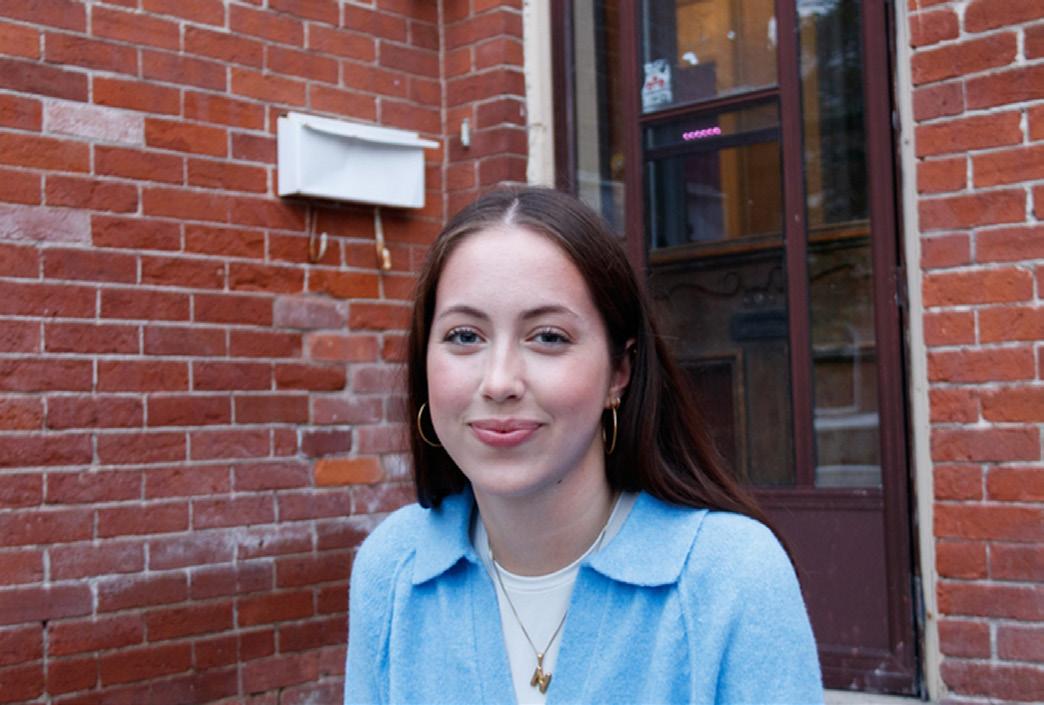
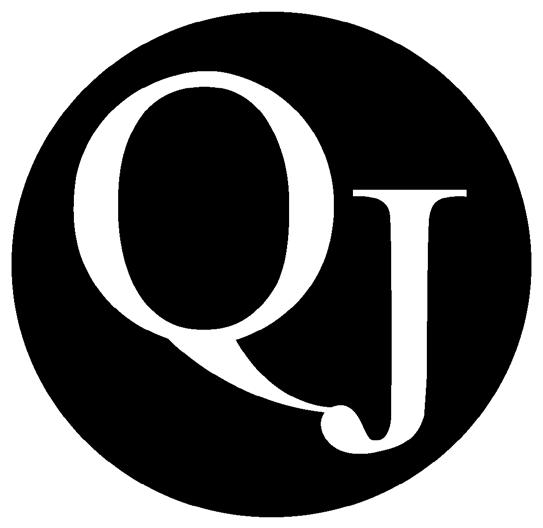
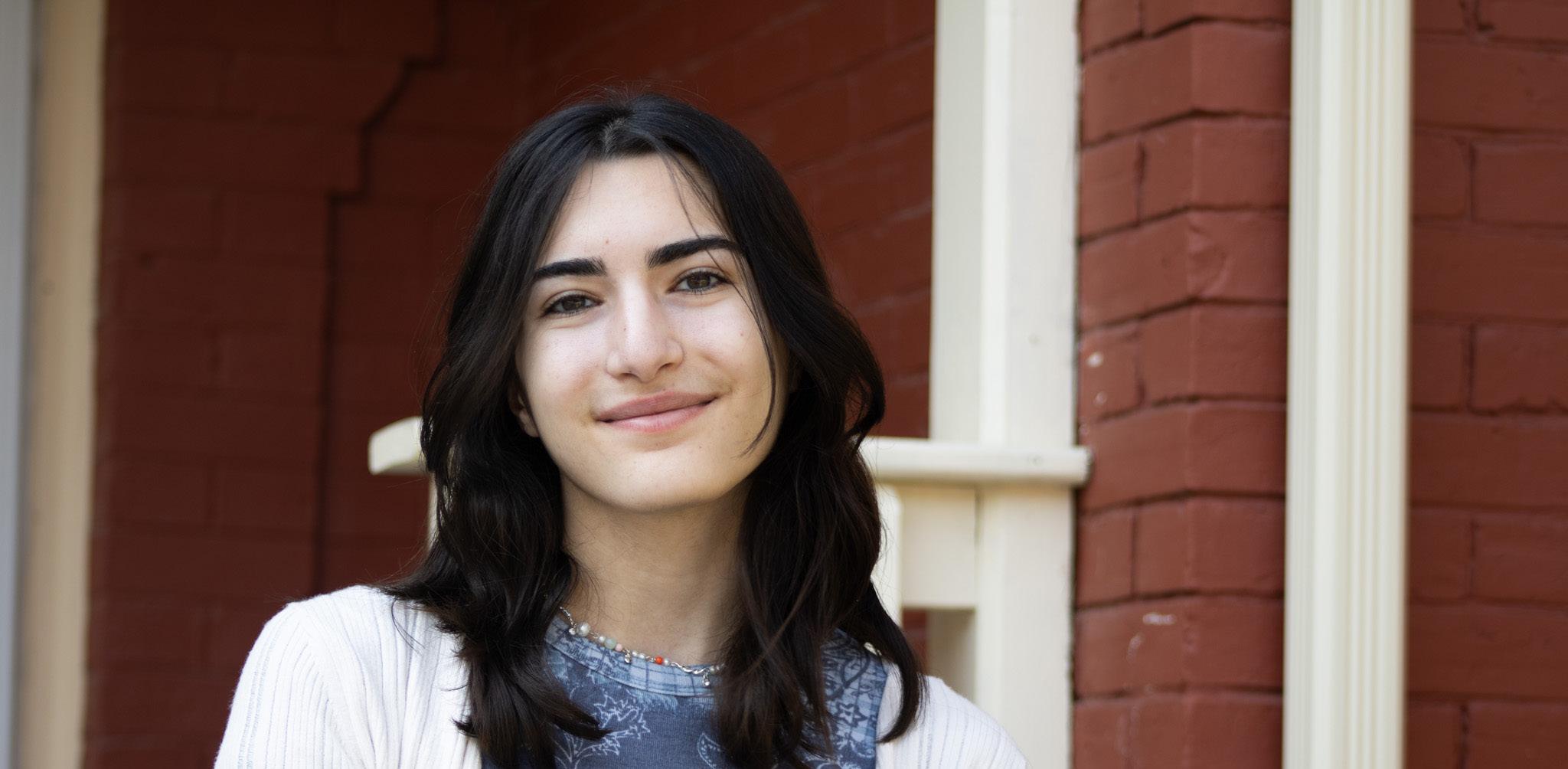
The divide of arts and science isn’t a just a feud, it’s an educational flaw
Cassandra Argiropoulos Contributor
For much of human history, academia was always treated as a holistic pursuit. Science was a type of natural philosophy, and it shared the same inquiry methods as history. It wasn’t uncommon to find an astronomer who was also a philosopher, or perhaps a historian who studied biology. It’s in this melting pot of subjects that teaching and learning flourished, and much of what we study in more well-defined fields today originates from this time.
Over time, this has shifted; as a physics student, I’m only able to take one humanities course this year. While other schools leverage their faculty’s format by offering opportunities to blend the Arts and Sciences, Queen’s reinforces the divide, which I believe puts its student body at a major disadvantage. At this rate, it seems the world will never see a philosopher-mathemeticianbiologist-historian-astronomer-poets again.
The modern divide between the arts and science fields is a problem that’s often overlooked, and a prime example of it can be found right here at Queen’s University. The largest faculty at the school, the Faculty of Arts and Science (FAS), is one of only 12 of its kind in Canada. The fact that it’s a uniquely interdisciplinary faculty should point towards a structural force that upholds this, but this isn’t the case.
In fact, the way programs in FAS are structured implicitly encourage this segregation. Most majors in the Bachelor of Science (Honours) program require 60 to 72 credits for completion, leaving little room for electives. There’s also no option to pursue a degree of Bachelor of Arts and Science (BASc), which is offered at several other Canadian universities, or to complete a Joint Honours with a subject from each field. Additionally, it’s difficult for arts students to enroll in science classes, and vice versa, with spots being reserved for those in the respective program. In some cases, it's easier to take courses outside of FAS than it's inside. While many arts students can easily take classes from the Smith School of Business, for example, they're restricted
from taking science classes within their own faculty. What is the point of having a combined arts and science faculty if they're practically separate by design?
The University of Toronto (U of T), as an example, is another school with a combined Faculty of Arts and Science. To ensure students can take full advantage of this, U of T enforces “breadth requirements,” which require students to take classes in other subject areas besides their field of study. As well, they offer double majors with an arts and a science component, which is also built into some majors, such as the HBSc or HBA in physics and philosophy program. Evidently, encouraging interdisciplinary study is entirely possible, but Queen’s is seeming to do just the opposite.
The lack of integration at Queen’s signals a greater problem for the futures of students graduating with an ArtSci degree. Science isn’t just science—it’s also inquiry, communication, and problem solving, all of which are substantial elements of humanities courses. Likewise, arts majors could benefit from knowledge of science. The scientific method, after all, derives from philosophy, and these analytical approaches can be applied to a number of humanities disciplines.
Sure, you can use mathematical equations and scientific laws to explain how the universe works, but the humanities are aptly named—they’re purely human. They’re a product of our species. They encapsulate our distinct understanding of the world around us curated from experience and existence. What people often fail to comprehend is both of these fields rely upon one another, they’re wholly and undeniably symbiotic.
An absence of holistic curriculum fosters a generation of students with tunnel vision, lacking the skills interdisciplinary study would develop. The divide is only getting worse, especially as an increasing number of students view university as “job training” rather than a place to explore and expand upon intellectual interests. Even if students are looking to be employed out of university, studies have shown employers value candidates with a wellrounded educational background. Knowing how to read Shakespeare is just as important as knowing how to calculate a derivative, and everyone can benefit from having both abilities.
Of course, specialization is important
in circumstances such as applying to graduate programs, and I’m not arguing the University should turn to a full-on liberal arts style of teaching. However, I do think Queen’s, more specifically the FAS, isn’t taking full advantage of its combined faculty of arts and science. It should, at the very least, allow for some flexibility for students who are interested in both, and encourage students to try something new.
Universities should be places where knowledge can grow and thrive, not be thrown into a box. It’s possible for a Queen’s education to break the barriers between these fields, allowing students and faculty to answer questions and conduct investigations that specialization in either arts or science wouldn't allow.
There has been talk within the faculty of overhauling degree programs and reducing the number of credits needed for a major, most likely due to the ongoing
budget deficits. Currently, completion of 60 or more credits is required for a major in an honours program at Queen’s, while most schools in Ontario require less. If this were to be imposed, the Faculty should use this as an opportunity to allow for more learning that bridges the current divide. A Joint Honours degree in an art and a science, or new interdisciplinary programs, for example, could be possible.
There’s hope for a Queen’s where multihyphenates who have gained a cohesive and articulate understanding of the world through science and the humanities in their education are common. Progress means turning an outdated, superficial duality between the arts and the sciences into a singularity where all corners of human knowledge converge. However, this is only possible if the institutions who are educating the next generation are willing to make it happen.
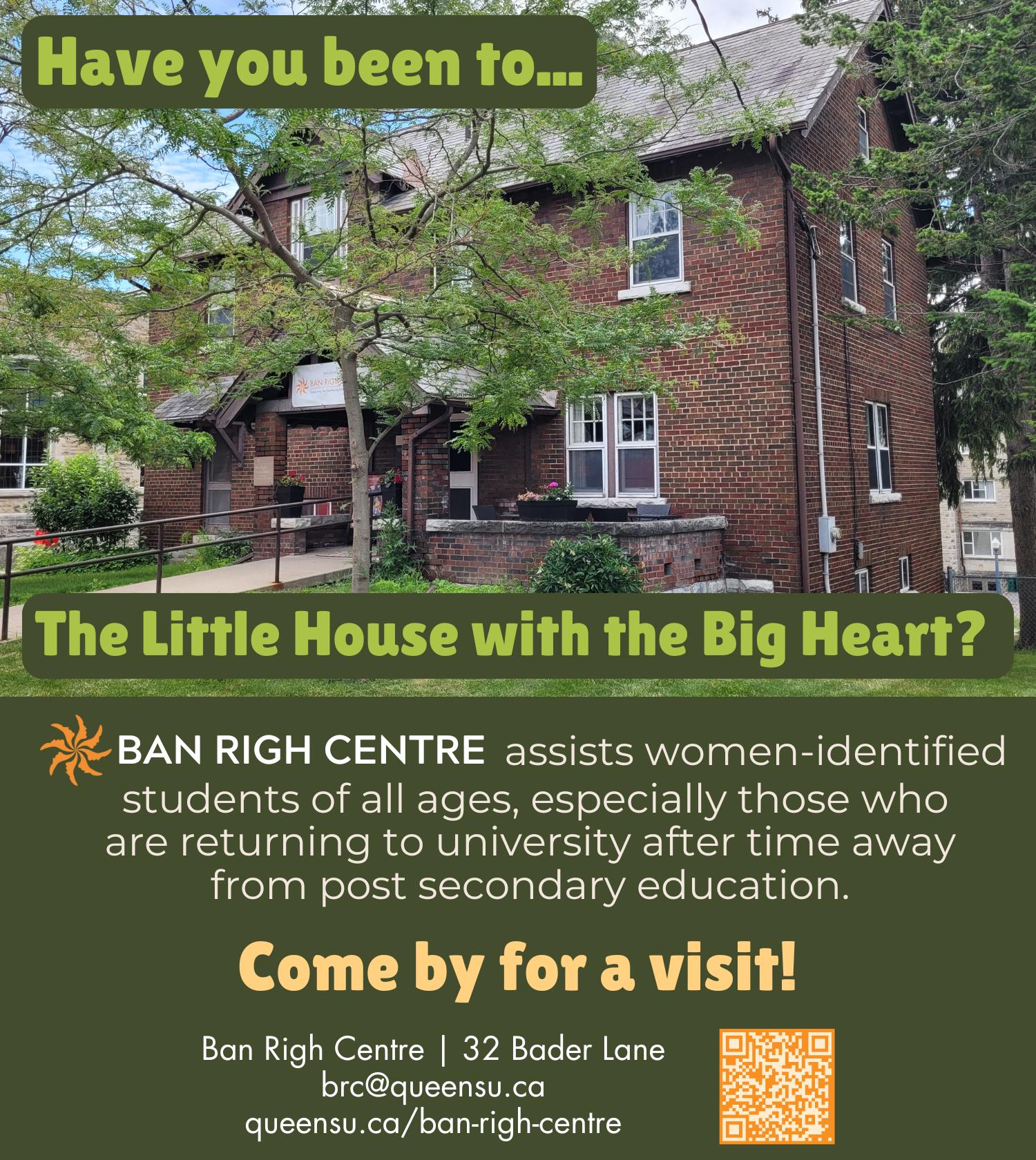
‘The
competitive job market that pools together undergraduates and postgraduates isn’t helping’
JAYDEN JEONG Business, Science, & Technology Editor
Ontario’s minimum wage hike may help students meet minimum obligations of their day-to-day lives, but it still falls short in covering rising living costs.
On Oct. 1, the Ontario government raised the minimum wage to $17.20 an hour from the previous $16.55 an hour. It’s standard for the Ontario government to increase its minimum wage every year, the provincial government reported in a news release. This year’s 3.9 per cent increase is based on the Ontario Consumer Price Index (CPI).
Minimum wage in Ontario is now the second highest in Canada
after British Columbia’s wage of $17.40 an hour. Other provinces also increased their minimum wage on Oct. 1 to $15.00 in Saskatchewan, $15.80 in Manitoba, and $16.00 in Prince Edward Island.
“Under the leadership of Premier Ford, our government is helping nearly one million workers earn more money for themselves and their families,” Minister of Labour, Immigration, Training and Skills Development, David Piccini said in the release.
As of 2024, the living wage in Eastern Ontario regions, including Kingston, is $20.60 an hour, according to the Ontario Living Wage Network. The Greater Toronto Area’s (GTA) living wage is $25.05 per hour.
Living wage is an hourly wage required for a worker to cover the basic expenses, like food,

housing, transport, and clothing, according to the World Economic Forum.
Heeya Patel, HealthSci ’26, works a minimum-wage job at a Kingston restaurant throughout the semester. Even with the recent rise in minimum wage, Patel worries about living costs.
“Although the recent increase in minimum wage is a positive step towards improving the financial stability of Canadians, university students are still victims of the steady rise in the cost of living. Rent, tuition, and other day-to-day living expenses aren’t getting any cheaper. The increase can only do so much,” Patel said.
From 2023 to 2024, the average rent prices in Kingston increased
12 per cent, according to the National Rent Report by Rentals. ca. The greatest increase was 22 per cent in the average price of a three bedroom apartment. A three-bedroom, one-bathroom apartment at Unity Point, an off-campus residential building, costs $1,375 per person monthly.
As of Oct. 1, a student working 20 hours a week at minimum wage would earn $1,376 a month before taxes—a mere dollar more than the cost of their rent.
“On average, you can expect to spend 10 to 15 hours per week on a 3.0-unit course in the Fall and Winter terms,” according to the University.
Full-time students usually take at least five, three-unit courses
per term. This comes to 50 to 75 hours a week of course load, meaning most students cannot afford to work 20 hours a week without sacrificing their academics.
“Honestly, most university students I know make minimum wage, and the competitive job market that pools together undergraduates and postgraduates isn’t helping,” Patel said. “While the increase is helpful, it’s a small part of a larger puzzle that needs to be solved.”
Many Queen’s students are employed by local businesses to make minimum wage. For example, most waged positions offered by the AMS offer minimum wage at the service staff level.
‘Using for-profit agencies is like slapping a Band-Aid on a gaping wound’
OLUWAMISIMI OLUWOLE
Business, Science, & Technology Editor
For-profit agencies have become the go-to solution for many healthcare organizations’ staffing shortages.
New research led by Joan Almost, a professor at Queen’s School of Nursing, in collaboration with the Canadian Federation of Nurses Unions (CFNU), has revealed a significant issue impacting Canada’s healthcare system: the rapid rise in public health spending on for-profit nursing agencies.
The study, Opening the Black Box: Unpacking the Use of Nursing Agencies in Canada, outlines several recommendations to address this costly trend. Almost calls for governments to phase out the use of private, for-profit nurse staffing agencies in Canada. In the interim, stronger regulations and oversight should be implemented to ensure transparency and prevent price-gouging.
Spending on for-profit agencies is expected to hit $1.5 billion in the 2023-24 fiscal year—a six-fold increase from $247.9 million just three years ago, the study shows. “The pace of this increase is shocking,” Almost said in an interview with The Journal.
According to Almost, the shift to relying on these agencies has been largely fueled by the COVID-19 pandemic, which left healthcare systems scrambling to fill staffing shortages.
Even as the crisis phase of the pandemic wanes, the trend has continued. What’s more alarming is the fact this figure only scratches the surface. Almost emphasized
due to a lack of transparency and available data, the real spending could be much higher. “The $1.5 billion is just the tip of the iceberg,” she said.
According to Almost, this surge in spending isn’t just a financial issue—it’s disrupting the healthcare system and affecting the quality of care.
“The use of short-term contracts and frequent turnover impacts team morale, workload, and unit culture. It disrupts the continuity of care, especially in long-term care settings where patients value seeing familiar faces. Agency nurses don’t have the same knowledge of unit policies, resources, or patients, which can cause confusion and lower the quality of care provided,” she said.
Almost highlighted the forprofit nursing sector operates with little to no oversight.
“We saw wide variation in how contracts were managed and how rates were set. In some cases, we saw contracts that had no ceiling on rate increases. This leaves healthcare employers in a bind when agencies decide to hike up rates unexpectedly, forcing them to choose between paying more or leaving units understaffed,” Almost said.
Almost’s research found this lack of uniformity makes it difficult to monitor spending and ensure that taxpayer dollars are being used effectively. Some provinces provided comprehensive data for the study, while others were unable to provide complete information, pointing to the need for a standardized regulatory framework.
Without intervention, the continued reliance on for-profit
agencies could have severe long-term consequences. Almost said some hospitals are taking out loans just to pay for staffing.
According to Almost, healthcare organizations should focus on addressing the root causes of the nursing shortage
through better retention and recruitment strategies.
Continued online at www.queensjournal.ca


Herbert Wang Assistant Sports Editor
Though it might not be apparent at first glance, Queen’s University as an institution is 183 years old, having been founded in 1841. With its age, naturally comes decades of tradition and history.
Part of its history are the sports programs that have dominated in the school’s facilities , filling stands in Kingston and around the country. Both at the ARC and at Richardson Stadium, you can see banners of previous champions fill the air, but with some dating back over a century ago it becomes hard to understand the magnitude of their achievement.
This series aims to highlight some of the golden moments here at Queen’s and help give some sense to why some cherish the Gaels so deeply.
On the south side of Richardson, if you look up towards the press box you can see every championship winning team. Look even closer and you’ll notice something a bit odd, for three consecutive years from 1922 to 1924, the Gaels were winners of the Grey Cup.
Today, the Grey Cup is presented to the winners of the Canadian Football League (CFL), a professional sports league that Queen’s doesn’t compete in.
However, back in the early 1900s, football was governed under
a completely different landscape. With the sport’s roots drawing back to rugby, football was governed by the Canadian Rugby Union (CRU) and the Grey Cup was its national trophy open to all members, and its western Canada equivalent.
For the first decade of its existence, the Queen’s program struggled in the way of success, while other rival universities were thriving, such as the Varsity Blues winning the Grey Cup from 1909 to 1911, and 1920.
The 1920 Varsity Blue championship must have particularly stung because the school quickly moved to make the team more competitive. With a donation of $50,000 from the Richardson family for a new stadium, they built Richardson Stadium on the same land where the modern iteration currently sits.
They would also build a new practice field near where Tindall field currently stands, hire a new full-time director, and trainer, while also recruiting new players heavily.
These moves spurred on a revolution for the team, immediately finding success in the following 1921 season. But it wasn’t until the 1922 season and beyond where the team would really find their strides.
From 1922 to 1925, they would win 23 out of 25 games and take home three Grey Cups.
Their first in 1922 was a
close match between them and the Edmonton Eskimos. Down 1-0 at half, they rallied to find 13 unanswered points to win their first Grey Cup, 13-1. It was part of a season the found them squeak through tough games, including a 12-11 win against the Toronto Argonauts to even make it to the championship.
Hosted at the newly built Richardson, the stands were filled with an attendance, and people were overflowing into the grounds around the stadium. With the win, the town would celebrate, hosting a banquet in the players’ honour.
What they didn’t know was two would quickly follow in dominate fashion. The next year they would steam roll their way to a Grey Cup matchup against the Regina Rugby Club who wouldn’t get in the way of an undefeated Gaels team, losing the matchup 54-0.
Queen’s would cap of a historic run with a final Grey Cup win against the Toronto Balmy Beach Beachers with a final score of 11-3.
They would come close to making it back to the Grey Cup in subsequent years, but they were never quite able to make it past the Eastern Canadian Championship.
In 1933, university teams would withdraw from the CRU, marking the end of the Grey Cup era, however Queen’s forever left their mark on Canadian football with their three consecutive wins.
Aidan Michaelov Senior Sports Editor
Research directed toward mental health has skyrocketed over the past decade, and with that, more teams across all sports are beginning to invest in their athletes’ mental health.
The Toronto Maple Leafs, along with most other National Hockey League teams, have become invested in the impacts that the psychological process can have on sports and high-performance athletes.
For professional athletes, every move they make becomes sensationalized. Their wins and losses are placed under a
microscope, and the public puts immense pressure on them to perform. This is unsustainable for most, leaving a load too heavy to bear for most athletes.
Leafs star and one of the best hockey players in the world, Auston Matthews, stated in a 2020 interview with the Spittin’ Chiclets podcast that the introduction of Greg Harden, a motivational speaker and life coach, and Dr. Meg Popovic, a player welfare expert, helped drastically improve the lives of professional athletes, both on and off the ice.
Matthews implied most superstars utilize mental health coaches on some level, citing Nathan MacKinnon, a star
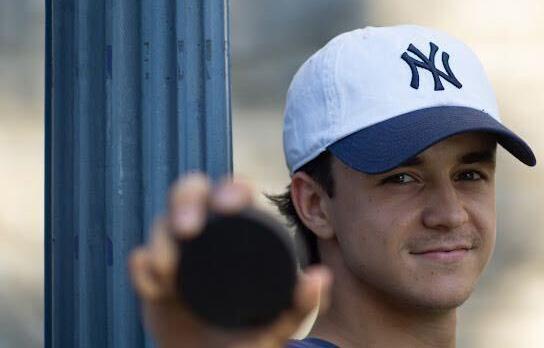
Aidan Michaelov Senior Sports Editor
For many, the shift towards post-secondary life means hanging up the skates or cleats and shelving the competitive spirit so many of us fostered throughout our childhoods. I’m here to say that that doesn’t have to be the case.
Managing your time at Queen’s can be a huge obstacle for many students, but that doesn’t mean the solution is to dedicate 100 per cent of your time to work or school.
Finding a balance is incredibly important when in university, and the departure of the major organized sports leagues you grew up playing in makes it difficult to find enjoyable and reliable ways to feed that competitive bug.
From softball to soccer, organizations like LUG and IMLeagues offer weekly games across various sports. While these organizations are great, they lack a few things that genuinely replicate what it felt like to play sports when you were young.
Now, I’m not saying you shouldn’t sign up for the previously mentioned leagues—they’re great. They solve many problems you’d have to solve for yourself if you wanted to play hockey, for example. They’ll book you the ice, and find you players to play with, and against.
centreman for the Colorado Avalanche, who also benefits from the services of a sports psychologist.
While it’s true professional athletes are subject to more public scrutiny, an argument can be made that there’s more internalized pressure within the minds of collegiate athletes, who are constantly competing and fighting to prove themselves as worthy of professional deals and professional contracts.
Continued online at www.queensjournal.ca
While weekly games, a lack of adequate refereeing, and poor organization leave many dissatisfied, there are other ways to tackle the problem of losing that burning passion to compete.
Truthfully, you’ll have to figure it out for yourself. At Queen’s, there are countless facilities, programs, and spaces for you to continue to express yourself athletically and in competitive ways.
Primarily, the ARC which offers a wide variety of programs, whether drop-in or scheduled that can help you find spaces where you can compete against other students.
Drop-in basketball, badminton, volleyball, and wheelchair basketball are just a few of the drop-in programs offered by the ARC, and they’re all great ways to destress and exercise
during a stressful work week.
One of the most overlooked parts of participating in organized sport during your youth is the fact that you’re constantly learning and pushing yourself. With the departure of coaches from casual university sport, it’s hard to push ourselves to continue to get better, but it’s imperative to replicate the landscape of organized sport.
There are a couple of ways to solve the problem of stagnancy. Firstly, play or compete against people who are better than you. If you’re constantly doing the same things to win games in casual games, you’ll never need to adapt or learn a new skill to win—this breeds complacency and makes whatever you’re playing boring.
For example, when playing basketball against people who can’t shoot, there’s no need to play defence—the same goes for hockey or soccer. On the other hand, if you’re playing against people who are significantly or slightly better than you, you’ll be forced to try harder to keep up.
Not only will this result in better exercise, but mentally, the feeling of accomplishment that comes with doing something you might have previously thought you were incapable of pays dividends in terms of building your sense of self and satisfying your competitive spirit.
If you’re ever struggling to find spaces to express your athletic or competitive desires, there are countless fields on and around Queen’s campus. There are seemingly innumerable courts and exercise rooms within the ARC that house any sporting desire you could possibly have.
If the resources offered by Queen’s and on campus aren’t enough for you, the City of Kingston provides its own sets of programs and spaces for you to take advantage of. Indoor or outdoor pickleball and tennis courts, badminton courts, and drop-in hockey programs are hidden gems more students should take advantage of if they want to reignite their competitive or athletic spirit.


The Psychic scholar Staff Writer
Whether you’re gearing up for Thanksgiving, Friendsgiving, Rosh Hashanah, or any reunion dinner over the Reading Week, the stars have a few insights to offer. From navigating tricky family dynamics to finding joy at hometown dives with friends, the zodiac signs will be making the most of the upcoming break.

Libra (Sept. 23 – Oct. 22)
Libra, we get it—family dinners can get uncomfortable, especially when your grandpa starts talking politics. Instead of biting your tongue, consider engaging in open dialogue—he might be more receptive than you think. At the end of the day, family is family, even if their opinions can be a little hard to swallow.

Scorpio (Oct. 23 – Nov. 21)
Sorry to break the news, Scorpio, but your parents already know about that failed midterm. Don’t skirt around the tough conversation—being honest with them will let you avoid an awkward confrontation at the dinner table. And maybe do some actual reading this reading break!
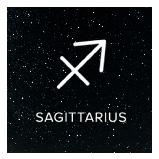
Sagittarius (Nov. 22 – Dec. 21)
Dreading the break, Sagittarius? No need! The time apart has actually worked in your favour— you’ll notice your bond with your siblings has become stronger than ever. Plus, it’s always nice to have someone to share
those side glances with when your mom starts retelling embarrassing childhood stories.
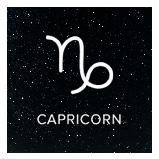
Capricorn (Dec. 22 – Jan. 19)
Stay sharp, Capricorn. Your favorite hometown dive might be the ideal place to reconnect with old friends, but you’re not the only ones with that plan. Play it cool and show some grace—even if you run into that nasty high school ex and his new beau.

Aquarius (Jan. 20 – Feb. 18)
Chin up, Aquarius—you’ve got plenty to be grateful for. Even if family gatherings aren’t your style, take this time to relax and appreciate your friends. Consider letting them know how much they mean to you—a simple “thank you” can go a long way.
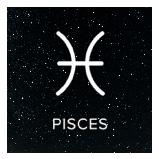
Pisces (Feb. 19 – March 20)
Pisces, it’s time to relax. All the stress about going home is completely unnecessary. You’ve earned a well-deserved break, so enjoy the home-cooked meals and heartwarming family moments. By the time it’s over, you’ll be wishing it lasted longer.

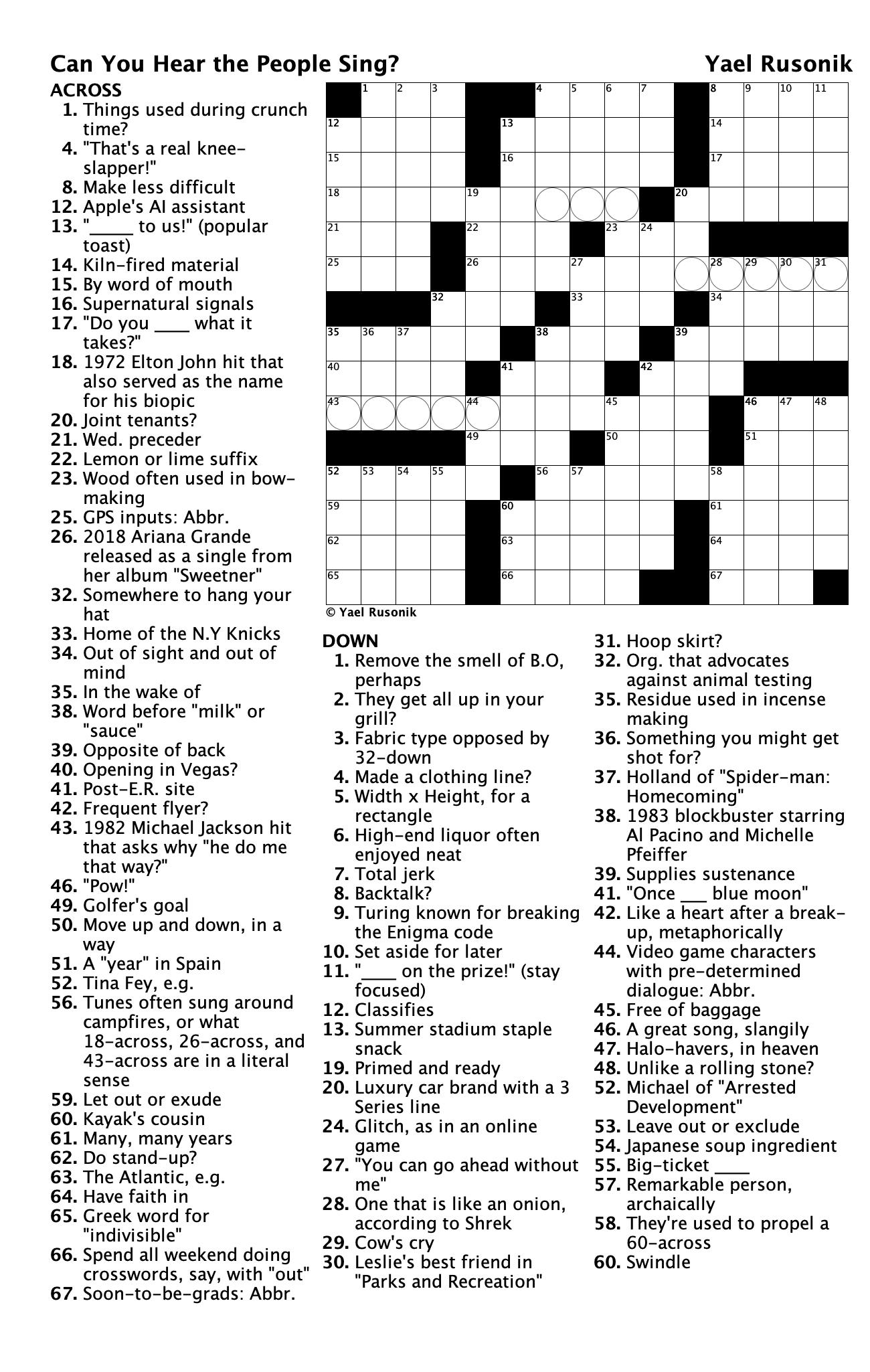
Aries (March 21 – April 19)
Student kitchens got you down, Aries? Take full advantage of a well-stocked pantry and fridge while you’re home. Spend time cooking with your parents this break—it’s the perfect way to bond over your shared passion. Plus, those lucky enough to enjoy your meals will definitely appreciate the extra love you put into every dish!
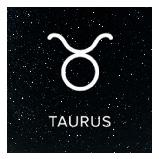
Taurus (April 20 – May 20)
You need a little escape, Taurus. Even if Reading Week doesn’t turn out to be as relaxing as you hoped, sneaking a cigarette on the porch with your cousin can provide a much-needed breather. Your grandma probably won’t notice, and even if she does, that brief getaway will be worth the consequences.

Gemini (May 21 – June 20)
Drop the act, Gemini. Pretending to be someone you’re not won’t do you any favours, and let’s be honest— Tofurkey tastes nothing like the real deal. Embrace your true self and ditch the substitutes, your family will see right through your charade. Authenticity always wins, in life and at the dinner table.
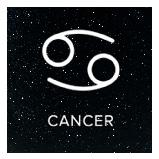
Cancer (June 21 – July 22)
Give your childhood friends an extra squeeze this Friendsgiving, Cancer. They’ve seen you at your worst, and are still hanging around, which is definitely something to be thankful for! They’re like family to you, so prioritize spending quality time with them during this Reading Week break.

Leo (July 23 – Aug. 22)
Leo, take a deep breath and prepare for a relaxing break in Kingston. It might seem a bit bleak right now, but you’ll come to appreciate the tranquility of an empty student house. Use this time to recharge and give yourself a well-deserved pat on the back for all your hard work this semester.

Virgo (Aug. 23 – Sept. 22)
Hold on to that wishbone, Virgo—you’re in for a lucky reading break! Reconnecting with high school friends will bring delightful surprises. Make sure to use your wish wisely, it just might come true sooner than you think.
Need a place to write down your thoughts? journal_ac@ams.queensu.ca

Playing the ORT Mystery Concert and headlining their first show, it’s been a busy time for the band
MADISON TAYLOR
Senior Arts & Culture Editor
Carnelian isn’t known as the singer’s stone for nothing.
Student band Carnelian have started their school year strong. From performing at the Orientation Roundtable (ORT) Mystery Concert for thousands of first years and headlining their first ever show at The Mansion on Oct. 3, supported by Jinx and Colour Theory, the four-piece have solidified their mark on the Queen’s music scene.
Balancing their musical pursuits alongside their studies, Greyson Martyn, Sci ’25, Duncan MacLaren, Sci ’25, Ryan Ross, Comm ’25, and Angus Carter, BMus ’25, are excited for what this new phase has in store.
Carnelian spoke to The Journal about their journey so far, and their hopes for the school year after starting the semester with a bang.
The band plays comfortably together, with Martyn on lead vocals and rhythm guitar, Maclaren on guitar, Ross on bass, and Carter holding down the drums. The group is known for their tight covers and intriguing originals, with their friendship off-stage visible through their connection while performing. The four are firm friends, certainly not just colleagues.
Being in a band was always something Martyn had hoped for. “I saw some bands getting started—I remember watching Kings of Queens and Girldad, and thinking—man, that looks like a lot of fun,” Martyn said. This spurred him to reach out to the other members that summer, though the group didn’t get together until September 2023.
The group was able to strengthen existing friendships, making it easier to find their groove. “Sure, we weren’t all super close, but we’d all hung out before [...] we weren’t super tight, but there was already that foundation, which was perfect,” Martyn said.
After winning last year’s Clark Hall Pub Battle of the Bands, Carnelian earned the title of the pub’s house band, an opportunity that afforded them invaluable performance time. Having their first practice as a group mere days before their winning performance, they managed to secure the crown through the votes from their dedicated friends.
“Our hopes were that we would be ready for the battle of the bands at Clark Hall [...] we had three days to really get
together a small set and to start playing. And we did that. It was really exciting,” Carter said in an interview with The Journal.
“It was our first show, and we had a lot of friends who were really excited about us. That’s something I think we’re so grateful for, is our friends that have always continuously supported us, and they’re the reason we’ve gotten as far as we have,” Martyn shared.
Inspired by a friend in geo-engineering with an impressive knowledge of rocks, the group settled on the name Carnelian.
“It clicked, the name, it just sounded great,” Ross added.
Considering the rock’s supposed properties, it seems to be a good fit for the musically inclined. “It’s supposed to bring confidence, and it’s known as the singer’s stone,” Martyn said.
Carnelian’s residency at Clark allowed the band to tighten their performance skills, and find their synergy as a band, qualities that’ve helped them to evolve as musicians. “I can tell our confidence has grown a lot to the point where we’re having so much fun up there, and it’s awesome to see, and be a part of,” Ross said.
This confidence was exactly what the band needed while playing at this year’s ORT Mystery Concert to a crowd of first-years. “I think our main goal going up there was to make the stage our own, and I think we did a good job with that. I was walking as far as my [microphone] cord would take me,” Martyn said. “We just wanted to make sure everyone was having a good time,” he added.
Playing their first headlining show
on Oct. 3 alongside Jinx and Colour Theory, Carnelian has high hopes for the future. The group released their first single “Lines” this March, and hope to release more music before the end of the year.
“We want to do more shows, we want to do bigger shows, we want to get more music out. We want to do shows outside of Kingston. We want to grow as much as we possibly can in the time that we have left [at university] and really just give this our best shot,” Martyn said. “We just want to give it everything now while we still can, and see how it goes,” he added.
Grateful for their fan support, and focused on the future, who knows what the rest of the year has in store for Carnelian.
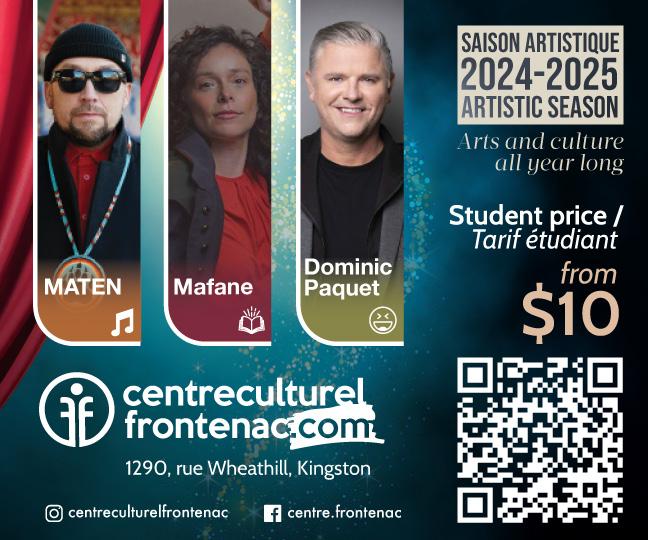

Liz shares how to deal with catfishing and deceit
When your date needs a ghostwriter for his love life, maybe it’s time to swipe left
Elizabeth Provost Copy Editor
Dear Liz,
I recently went on a date with a guy I thought was pretty cute on Tinder. His profile was full of green flags, and we had good banter over text. When I got to the date (time and location picked by him), something immediately felt off. He was surprised by facts about me that I’d already shared, and he was continuously checking his phone. Right as we left the cafe, we ran into a friend of his. She seemed weirdly excited to meet me, and after we exchanged a bit of small talk, she said they had something to confess. They told me she had set up his Tinder profile and she had been the one messaging me. So, for my date, he’d gone into this completely blind. I felt immediately confused, annoyed, and a bit used. He assured me he had a good time and would like to see me again, but I don’t know... I have a weird feeling about the whole thing. Should I see him again, despite our weird introduction? Can I even trust him, after our first date was all a lie?
Signed, Fooled and Afraid
Dear Fooled and Afraid,
Wow. This story took me on a journey, and I was just reading it—I can’t imagine how you must have felt living through it!
Let’s call it what it is: you were catfished. Maybe not in the most dramatic way, but someone was pretending to be your date, and that’s a big red flag. Trust me, I get it, he might’ve thought this setup was a quirky, harmless way to get help with online dating, but that doesn’t make it any less deceptive.
Here’s the thing. This “friend” of his was running the show and didn’t even bother to clue him in on details you’d already shared. And you two “running” into her… doesn’t sound like a coincidence to me. She didn’t even wear a mustache or hide behind a menu—talk about a bad wingwoman! Maybe she wanted it to fail, or maybe they were both just too immature to see the problem in all this. Either way, it’s not a good sign that neither of them thought about how you’d feel, and that’s not a great start.
Now, let’s focus on you. You were left feeling confused, annoyed, and used. Those are all
valid emotions. Even if he’s now genuinely interested and wants to make things right, you have to ask yourself: can you actually trust someone who started things off by lying, even by omission? You deserve someone who respects your time and is honest from the get-go. And although you may see it as innocent— that he just wasn’t confident enough to handle the messaging himself—to me, that’s a guy who needs to do a little more growing and maturing before hitting the dating scene.
If you feel like giving him another chance, have an honest chat about how all of this rubbed you the wrong way. But if you’re already getting those gut feelings that something’s off, trust yourself. To quote Maya Angelou: “When someone shows you who they are, believe them the first time.” Your instincts are usually spot on, and it’s totally okay to walk away if this doesn’t sit right. We should all be grateful it was only one date.
At the end of the day, you deserve a date who’s actually been paying attention and is ready to meet you as himself. No middleman needed.
With love, Liz
Vassanji comes to Kingston, bringing with him questions of Canadian identity
Eva Sheahan
Assistant Arts & Culture Editor
Two-time Giller prize winner
M. G. Vassanji, explores concepts of identity and belonging in his memoir and essay collection, Nowhere, Exactly
On the final day of the annual Kingston WritersFest, M. G. Vassanji spoke about his new memoir Nowhere, Exactly, which was published on March
26, at the Screening Room. He was interviewed by Juliane Okot Bitek, Queen’s professor and author on Sept.29.Withwitandcharm,thetwo writers discussed what it means to belong within this enormous world.
Vassanji is a Gujarati Indian and was born in Kenya before his family moved to Tanzania. He pursued postsecondary education in the U.S. and eventually settled in Toronto, Ont. to raise a family.
Eva Sheahan Assistant Arts & Culture Editor
Bound to be controversial, Sally Rooney’s fourth long-awaited new novel, Intermezzo, is finally here.
Released on Sept. 24, Rooney’s longest novel yet follows two brothers who are both grieving the recent death of their father. Set in Dublin, the oldest brother’s a lawyer named Peter who’s 33 years old, and entangled with his complex ex-girlfriend of the same age, Sylvia, and his new young girlfriend of 23, Naomi. The youngest brother is a 22 year old avid chess player named Ivan who, throughout the novel, falls in love with a 36 year old woman, Margaret.
The juxtaposition of the age-gaps within the brothers’ two romantic relationships offers an interesting commentary on gender roles. As a reader, Margaret is the only woman’s perspective we’re given. Due to the age gap, throughout her relationship with Ivan, she feels shameful and guilty, often worrying about the relationship and other people’s perceived judgements. Whereas, perhaps due to his grief, Peter doesn’t seem to reflect with sensitivity upon his own relationship with Naomi in the same introspective way Margaret does with Ivan.
It seems an older man with a younger woman is much more accepted by society. Whereas, personally as a reader, I found Margaret to be initially less unsettling than Peter.
I was looking forward to seeing Rooney take on family dynamics, as most of her novels don’t include familial relations, besides very minor roles, which are often held in an unhappy regard. I’m the oldest of five siblings, and my youngest sister and I are 12 years apart. Ivan and Peter are 10 years apart, and I was touched by the way Rooney explored the chasms that occur when siblings are separated by a decade and constant different eras of life while growing up.
The concept of grieving a parent is inseparable to the plot and the brothers choices throughout the story. Rooney found a way to unpack family dynamics for all of its love, hurt, complexity, and resentments.
kind. Not that Peter didn’t have these qualities, but the prose of his chapter felt like one stream of consciousness. I felt inserted into the mind of an addict for all of its chaos and distractions. Sometimes, he felt slightly creepy, arrogant, and narcissist, while simultaneously very depressive.
As the stressed and confident eldest child of the family, Peter carries his cumbersome oldest brother guilt along with him. Peter drinks, medicates himself to sleep, and seeks solace only through his relationships with women. Whenever he’s with one of his girlfriends, his thoughts finally seem to slow down for the first time. Rooney seems to effortlessly depict real and raw interpersonal relationships, while also crafting very relatable characters. Strangely I thought Peter was very relatable of a character for all his efforts and failings. I found Naomi’s carefree attitudes, Sylvia’s bursts of anger and hurt, and Margaret’s selfrighteousness and vanity to be very human.
“Other people might experience these feelings all the time, whatever they are. Strong powerful feelings of happiness, satisfaction, protectiveness. It could all be very ordinary, in the aftermath of mutually pleasant episodes like just now. Or even if it’s rare, to have a few times in life and no more, still worth living for, he thinks,” Rooney writes, reflecting upon human connection.
As a Rooney fan, her maturity and seriousness becomes more and more evident throughout each of her new novels. Comparing her two most recent novels, I’ll choose Beautiful World, Where Are You (2022) over Intermezzo, because of how relatable the women were, how thoughtful the social takes were, and the commentary on relationships and friendships. However, the choice only takes place right now.
I’m certain Intermezzo will sit in my brain and pick at my thoughts for a while. With each re-read, the story will only offer me more and more, especially as I get older, reflecting upon my own grief, family, and romantic relationships.
Vassanji’s transnational life and upbringing have left him with many questions about where he belongs and what belonging truly means.
Continued online at www.queensjournal.ca
Before reading, I was a little nervous as this novel seemed much more male centered than her other stories. I thought the most classic Rooney introspective voice came through from Margaret and, by extension, Ivan. Unsurprisingly, upon research, I found out the character and voice that came to Rooney first for the novel was Margaret’s.
The biggest change within Rooney’s writing was Peter’s interesting character. Peter’s perspective seemed different from the normal Rooney male character who’s very soft, sensitive, and
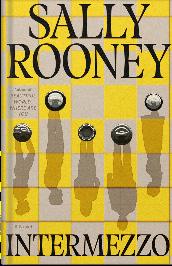
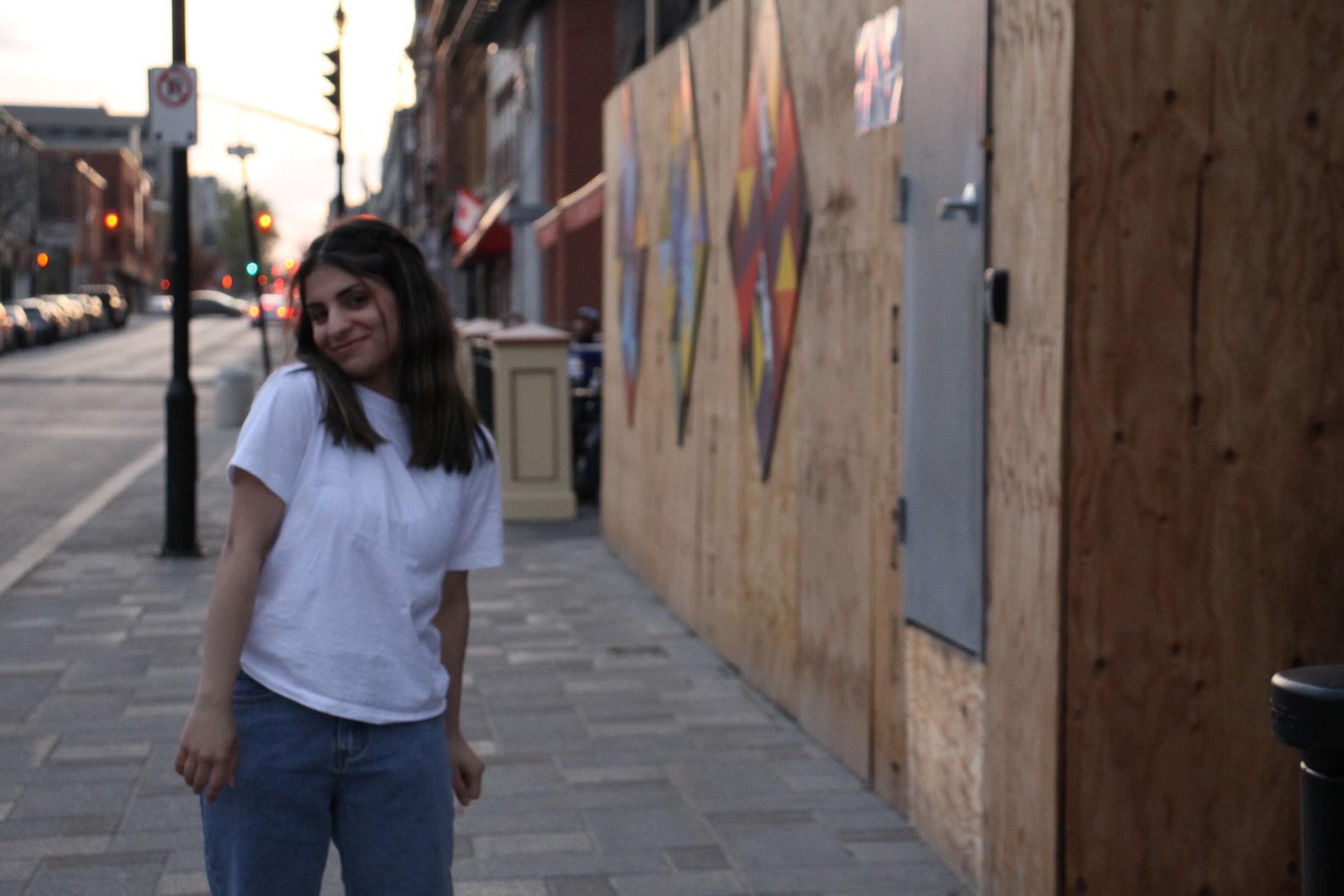
In a world of unwritten scripts and unplanned lives, I wonder if Vienna really will wait for me?
Meghrig Milkon Senior News Editor
We often categorize ourselves as either dreamers or realists—a debate philosophy has wrestled with for ages, without resolution.
I like to call myself a dreamer: someone who reaches for the stars, knowing they might be out of reach. I’m someone who’s a little naive about the world, believing everything happens for the best—someone a realist would call a fool.
“For as long as I can remember, I’ve been in a constant rush, desperately wanting to feel in control
For as long as I can remember, I’ve been in a constant rush, desperately wanting to feel in control. I leap into the unknown, fully aware I might fall and crumble under the weight of my worries, I yet cling to the hope things will unfold as I’ve dreamed and planned. I’ve
done this so often I now wonder if I’ve been mistaken—do I truly have control over anything?
Spoiler alert: none of us do. But oh, how we love to believe we do.
Still, I’m not bothered by this. When I find myself in difficult situations, I often turn to music, searching for lyrics that resonate with my experience. The first two songs on my “Soundtrack of My Life” playlist are, for obvious reasons, Meryl Streep’s cover of “Slipping Through My Fingers” and Billy Joel’s “Vienna.” Both songs capture the essence of who I am—better than Descartes ever could.
When I sit around the table with my friends and family, passionately mapping out our life plans, we speak with unwavering confidence, convinced our visions will play out exactly as we imagine. But then life, with its unpredictable flair, throws a curveball, saying, “Deal with this now.” And just like that, we find ourselves bowing to fate, surrendering to a script we never agreed to.
My first uninvited script began with a vow to steer clear of men, convinced their flaws and inability to treat someone kindly were the final straw. But fate had other plans. It made me fall head over heels for the most beautiful soul. After two years and countless cherished memories, I can’t imagine my life
without the love we share.
Looking back, I was so determined to control my own life, to stay away from relationships and people offering only half-hearted commitments.
If you had asked 18-year-old me if I’d ever be in a long term relationship, she would’ve laughed in your face. I’m terrified to admit that my desire for control could’ve lost me the love I know now.
“I’m terrified to admit that my desire for control could’ve lost me the love I know now
So, perhaps letting myself fall for this unexpected script wasn’t such a bad thing after all.
The second uninvited script came long before I was aware of my ambitions or desire for control. I always imagined a future where I’d grow up and grow old in my beloved hometown of Aleppo, side by side with my best friend, who now lives in Armenia. Yet, the war swept through like a thief, robbing us of the chance to bring that dream to life.
In reality, none of the scripts from my childhood were stories I would’ve dared to write for myself. I would never have written a story where my dad and grandpa were kidnapped, where war cruelly tore my
family apart, or where my home was bombed, leaving us without one. The thought of being miles away from those I love is a chapter I never could’ve imagined.
In my version of the story, my dad and grandpa would’ve taken me to dance practice, fueling my dreams of becoming a professional dancer. I would’ve written a script where every Sunday was a family dinner, with laughter echoing through a home that still stood strong, filled with warmth and love.
But the truth is, the tension I feel toward control comes from never really having it—from being torn between the unpredictable dance of life and fate.
Despite it all, I’ll never stop dreaming and reaching for the stars. So, what if the scripts didn’t follow my exact words?
I know I’m capable of love, and I’ve found strength in the face of adversity. I will forever live my life with an open heart, full of space for so much love.
Billy Joel promises Vienna will wait for me, whispering that I’ll get to chase all my dreams when the time’s right, and I’m ready to embrace my path without tearing myself to crumbs. Meanwhile, Streep’s voice echoes in my ears, reminding me to be okay with control slipping through my fingers, with life veering in unexpected directions.
You might be wondering what comes next, how my story
might unfold. I can’t say that in two years, I’ll be graduating and heading off to another school—that’s a script I refuse to write for myself. Instead, I’ll write this one: throughout my life, I know I’ll inevitably wake up from my delusions and ambitions. But, I’ll never stop growing in love, nor will I cease to chase my dreams and embrace my inner dreamer. Even on the toughest days, I’ll hold on to the belief that my capacity for love will guide me toward the good—and nothing less.
“The thought of being miles away from those I love is a chapter I never could’ve imagined
No matter what we plan, I’ve come to realize that while we may have a vision of our futures, life will eventually deliver a new script to our doors, taking us on adventures we never planned or dared to write. As scary as change may be, always remember that the script wouldn’t come to your door if you weren’t ready for it.
Want to write a postscript? Email journal_postscript@ams.queensu.ca for more details.